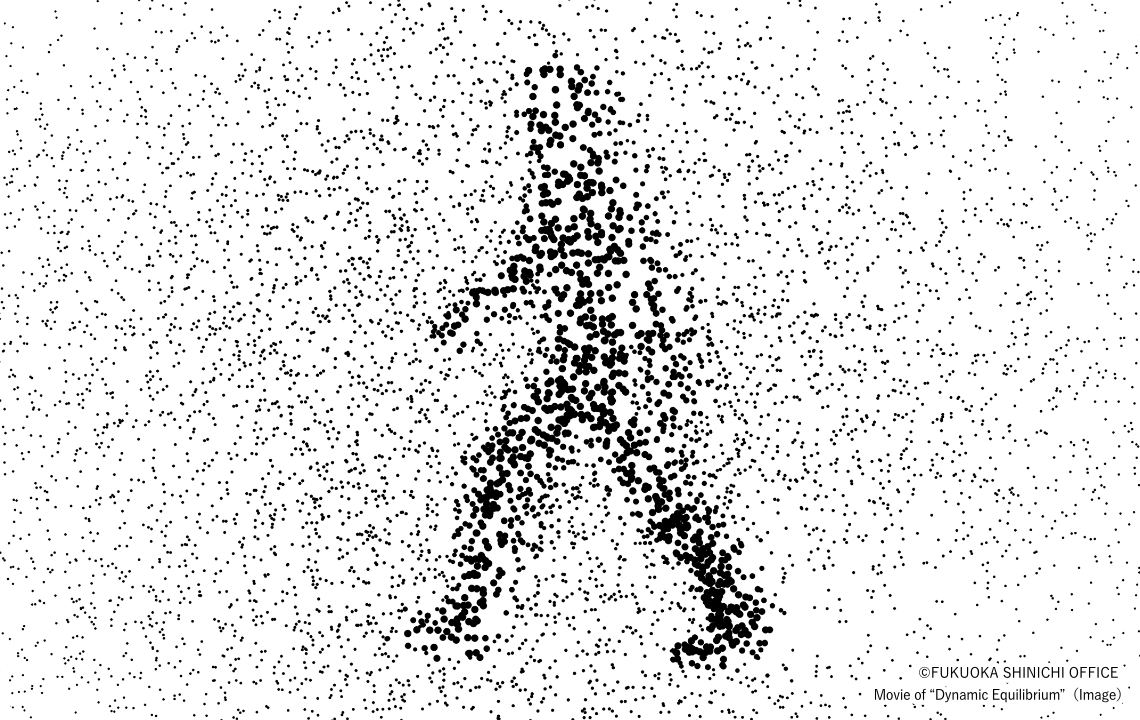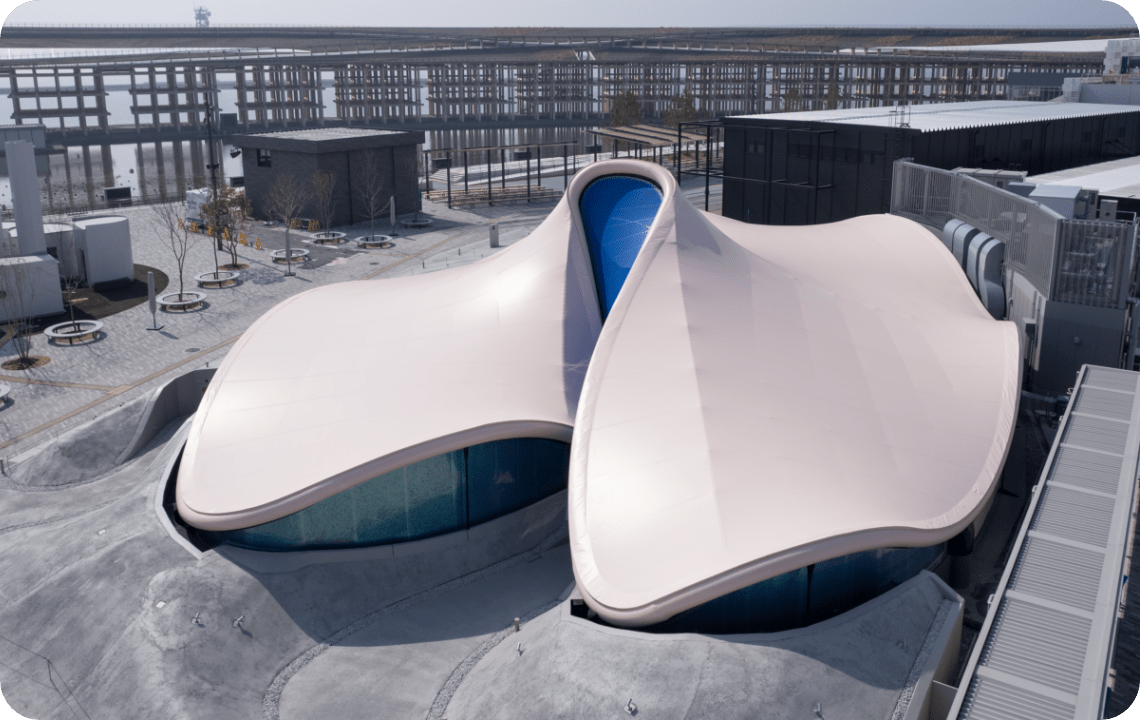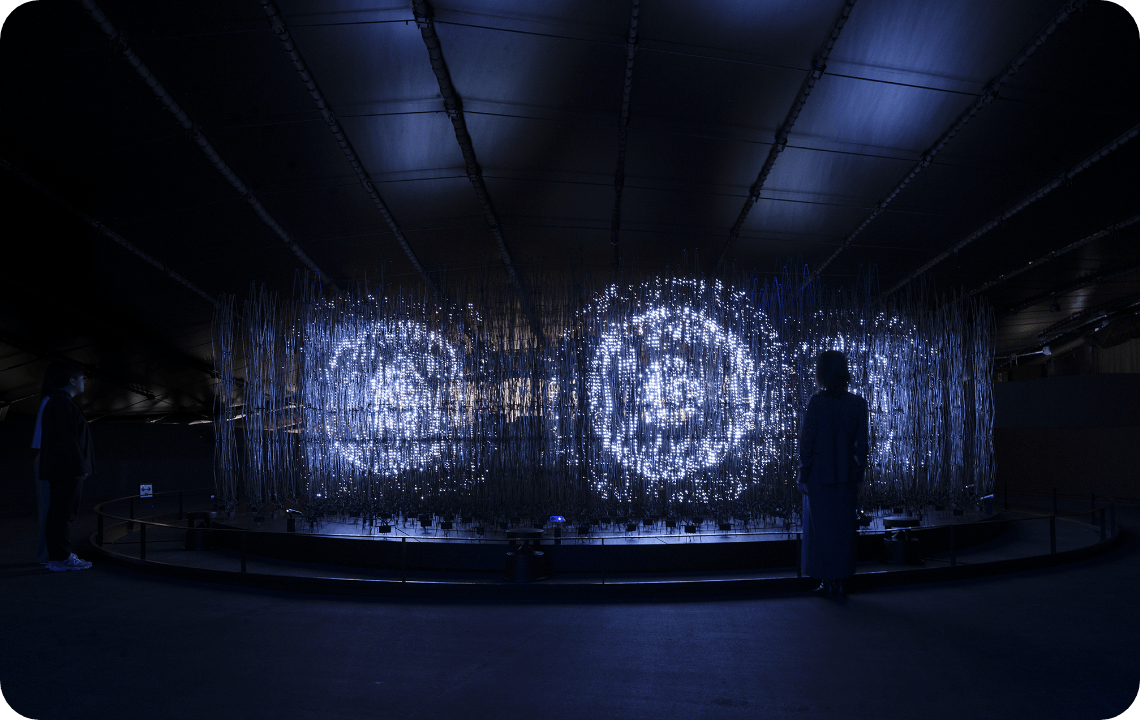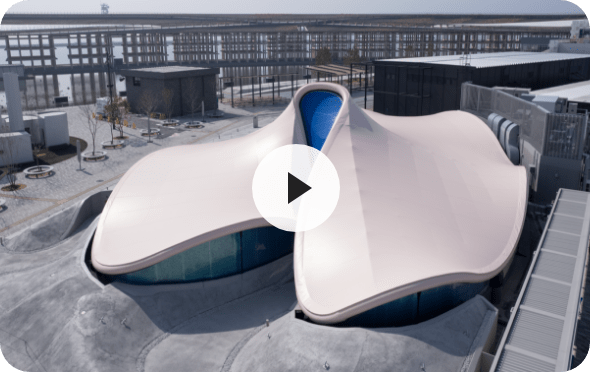Cast
-

- FUKUOKA Shin-Ichi Producer
-

- HASHIMOTO Naoki Architect
-

- Takram Exhibition Director
1.Dynamic
Equilibrium
Equilibrium
Where does our life come from, and where does it go? While the law of entropy dictates that all things break down and decay, life maintains its balance by continuously breaking down and rebuilding itself, as if defying this law. This is called “dynamic equilibrium.” Life exists in the space between destruction and creation. Our lives are temporary existences within this flowing stream. The essence of life lies in this dynamic equilibrium.
Cast
-

- FUKUOKA Shin-Ichi Producer
-

- HASHIMOTO Naoki Architect
-

- Takram Exhibition Director
2.The History of
Altruism in Life
Altruism in Life
The evolution of life, often perceived as a story of survival of the fittest or natural selection, has actually been driven by altruistic behaviors such as symbiosis and cooperation. This history of altruism began in ancient times with the emergence of life itself, through endosymbiosis, multicellular organisms, and sexual reproduction. Let us experience together this 3.8-billion-year “History of Altruistic Life” as we reconnect with altruism, the fundamental principle of life.
Cast
-

- FUKUOKA Shin-Ichi Producer
-

- HASHIMOTO Naoki Architect
-

- Takram Exhibition Director
3.Embryo
The pavilion architecture is named “Embryo.” An embryo represents the initial stage of life development—the moment when life takes form. Like a thin membrane embracing life, the pavilion gently touches the ground. Without internal columns, the Embryo maintains its balance while constantly changing its form, just as life continuously transforms. It is an “ephemeral architecture” as if manifesting life itself.
Cast
-

- FUKUOKA Shin-Ichi Producer
-

- HASHIMOTO Naoki Architect
-

- Takram Exhibition Director
4.Clathra
Inside the pavilion is “Clathra,” a three-dimensional theater system where 320,000 delicate particles of light flicker freely. The name “Clathra” derives from clathrin, a protein that forms the skeletal structure within cells. These ever-shifting particles of light depict the 3.8-billion-year drama of life, woven not through selfishness but through altruism.
Cast
-

- FUKUOKA Shin-Ichi Producer
-

- HASHIMOTO Naoki Architect
-

- Takram Exhibition Director










